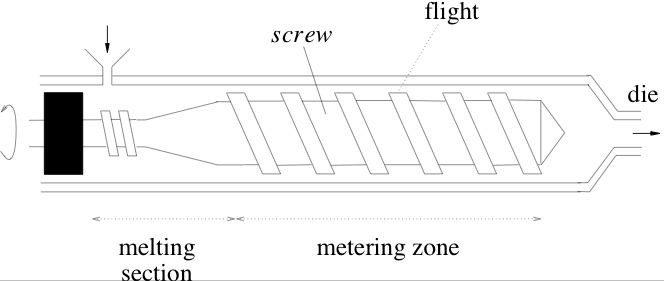[1].
Click here to
watch the movie.
A
three dimensional view of the screw
geometry used in the simulation is shown below (the outer barrel is not
visible). The arrows indicate the counter-clockwise rotation of the
screw.
1. M. J. Stevens & J. A. Covas (1995), Extruder principles and operation.
Chapman and Hall.
2. M. G. Blyth & C.
Pozrikidis (2006), Stokes flow through a
single-screw extruder. AICheJ, 53(1), 69-77.
3. C. Pozrikidis (2005),
Introduction to Finite and Spectral Element Methods using Matlab.
Chapman and Hall/CRC.


